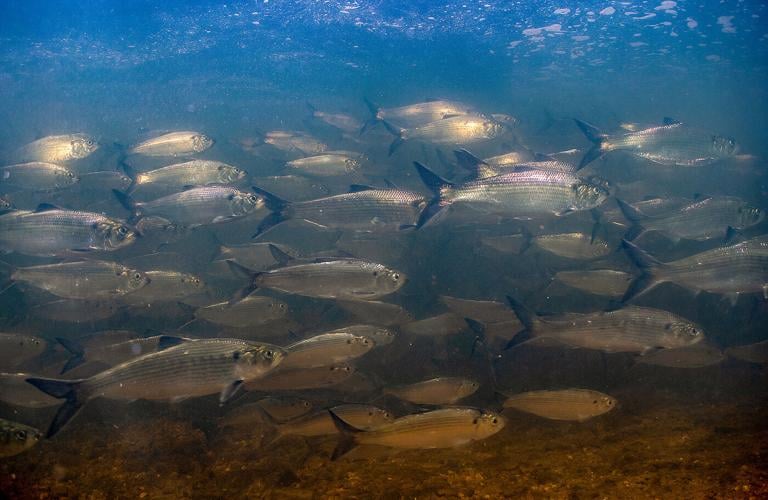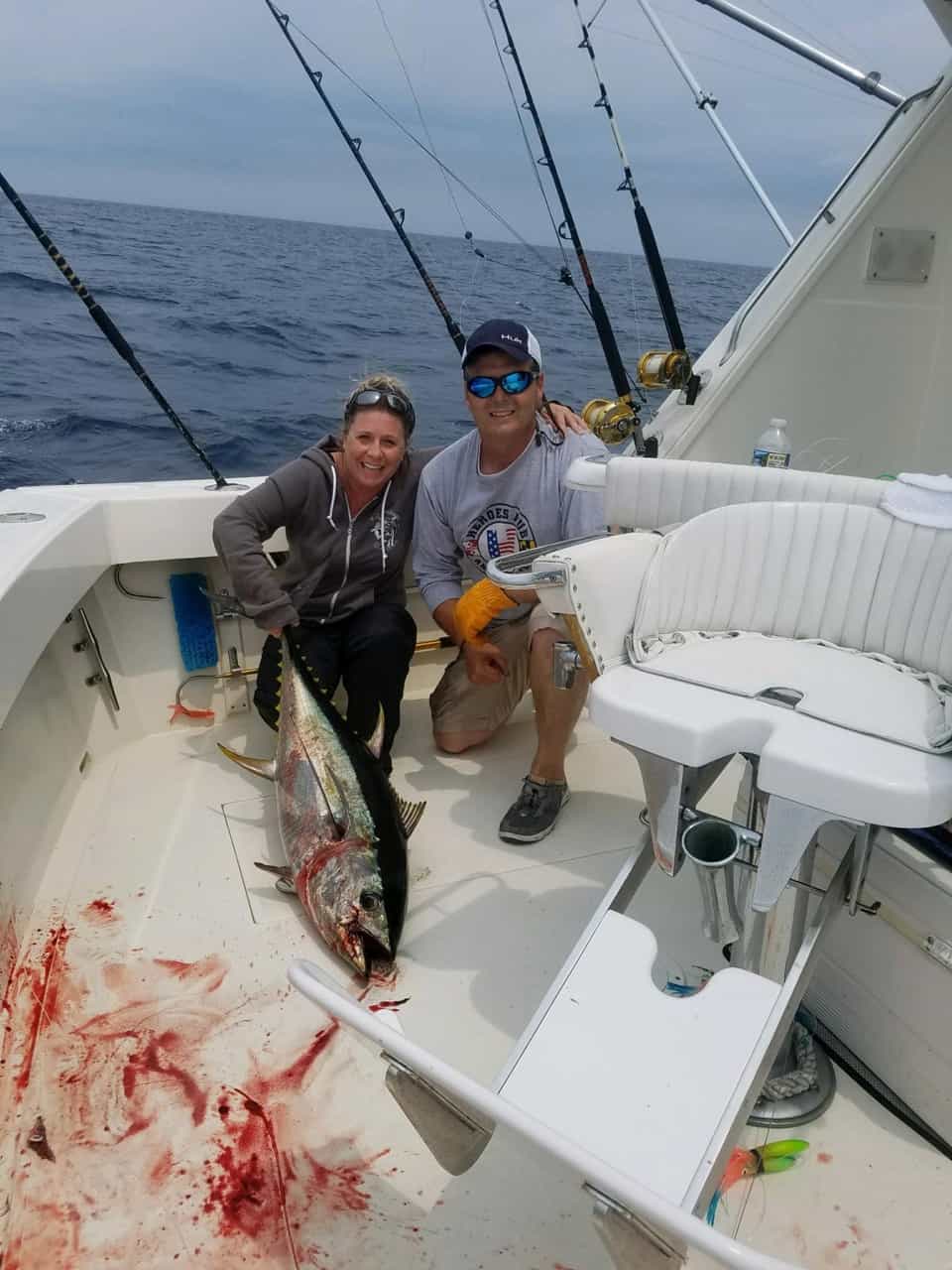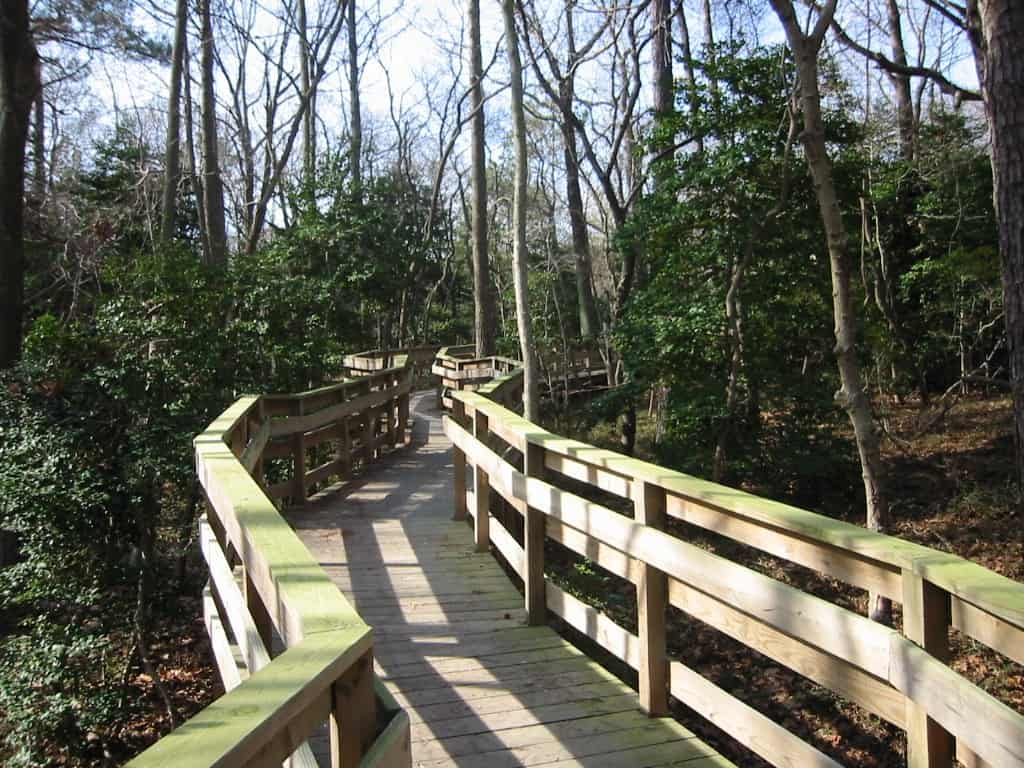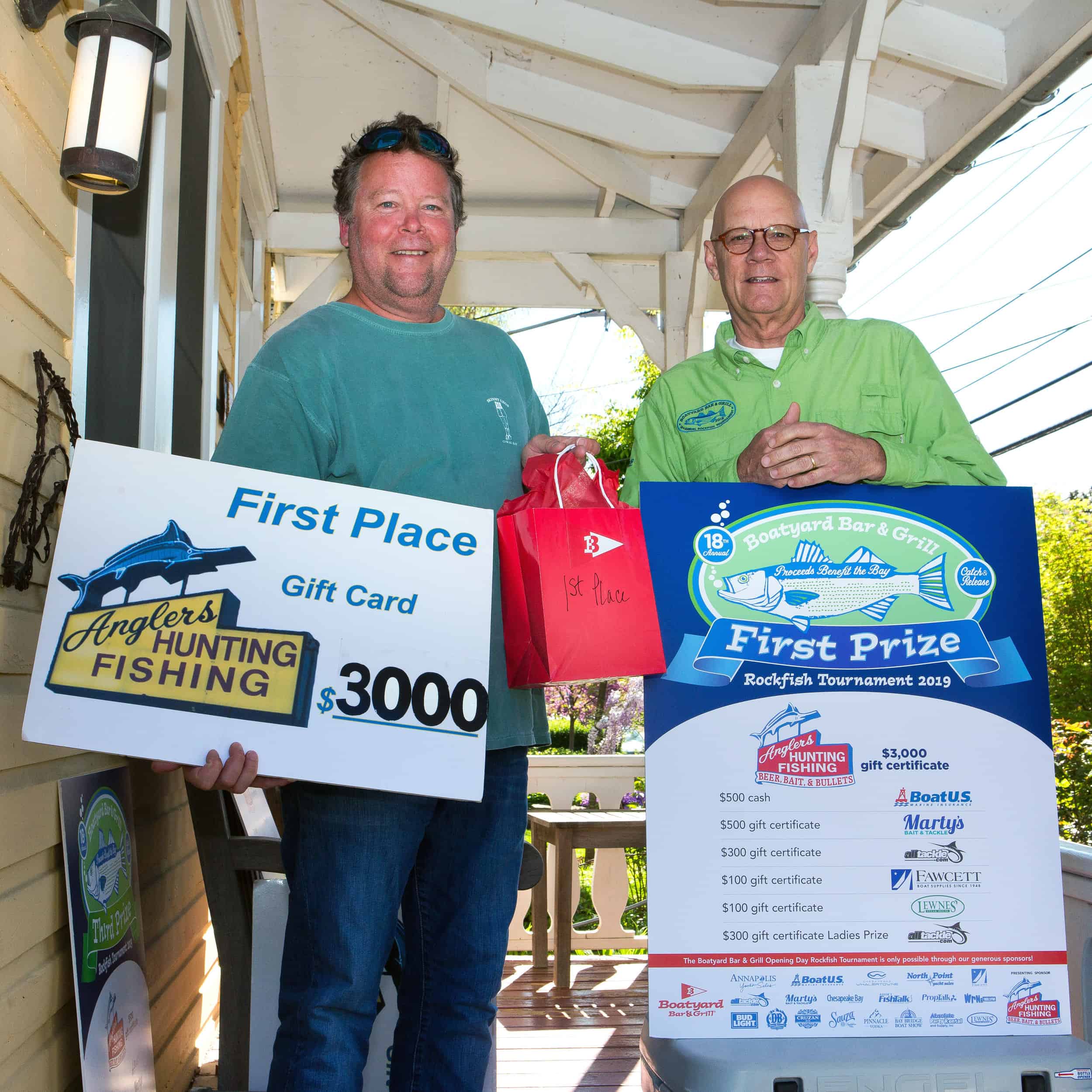One day back in April, Dave Antos couldn’t focus on work. His friends were blowing up his phone with pictures of their catches on the Occoquan River in Virginia. Within two hours, he was in the middle of the river, throwing long casts under high winds.
He stayed alert. Writhing hickory shad aren’t afraid to smack their opponent. “It’s a fun fish,” he said. “You get a lot of fight.”
Now, a conservation group is hoping to maintain the hickory shad recreational fishery for people like Antos while giving the species more protection.
The Coastal Conservation Association (CCA) Virginia submitted a petition to the Virginia Marine Resources Commission (VMRC) on July 23 recommending that recreational anglers be allowed to keep only 10 hickory shad a day. The catch is currently not regulated in Virginia’s portion of the Chesapeake Bay watershed.
Although the species seems to be doing better than its well-known cousin, the American shad, there is concern that its numbers in Virginia may have declined in recent years.
Wayne Young, hickory shad team coordinator with CCA Virginia, said the proposed limit is a good starting point.
“[The VMRC is] starting something new,” Young said. “I hope more information will come down the road that will assist them in making informed decisions.”
The public can comment on the petition on Virginia’s Regulatory Town Hall website through September 16.
Hickory shad act as an ecosystem bridge between the zooplankton they eat and the birds and fish that eat hickory shad. Historically, they were important for people as well. Spring spawning runs of hickory and American shad were a welcome food for colonists and Indigenous peoples after harsh winters.
“We have them as a great historical significance to our country and a key part of the food web. And just like any species that we have that exists, we don’t want to ever see them go away,” said Pat McGrath, a scientist at the Virginia Institute of Marine Science.
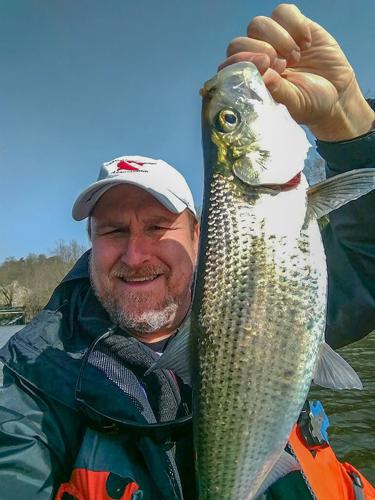
Hickory shad have the least protection in Virginia among the four alosine species. Along with hickory shad and American shad, those also include blueback herring and alewife. They all start their lives in the rivers, migrate to the ocean where they spend most of their lives and return to their native rivers to spawn.
The Maryland Department of Natural Resources set a moratorium on both American and hickory shad in 1980. It’s been stocking rivers with American shad since 1994 and hickory shad since 1996. Chuck Stence, DNR’s warm water hatcheries manager, said they consider hickory shad populations as restored in the Patuxent and Choptank rivers. So now, the department is stocking both species in the Patapsco River.
There is some evidence that their numbers in Virginia are dropping.
Alan Weaver, fish passage coordinator at the Virginia Department of Wildlife Resources, works with his team to conduct electrofishing surveys of hickory shad passing through the James and Rappahannock rivers during spawning season. He’s seen their catch rate decrease over the last four years.
According to their weekly spring surveys in the James River, they went from a seasonal catch rate of 60 hickory shad an hour in 2003 down to 10 an hour in 2023. There were similar results in the Rappahannock River, with 60 hickories an hour in 2003 down to 23 an hour in 2023.
Weaver said the proposed harvest limit, or creel limit, for Virginia’s Chesapeake waters “has potential to help the situation.”
Last year, U.S. Sen. Tim Kaine (D-VA) and several Virginia state congressmembers allocated funding for VCU and the U.S. Fish & Wildlife Service to create the Virginia Alosa Research Consortium. The consortium will study the alosa species, including hickory shad.
Garman, who is one of the consortium’s principal investigators, has been collecting baseline data on the species. The researchers are leveraging existing research equipment throughout the East Coast from other studies to track where the fish are going.
The consortium also collaborates with some of Virginia’s Indigenous tribes because many have cultural ties to these fish. The Upper Mattaponi Tribe in pre-colonial times relied on the fish to arrive in February during the full moon, or “starving moon.”
“Creel limits would be a start,” Upper Mattaponi Chief W. Frank Adams said. “As researchers do their job, we might have to adjust … we want those rivers teeming again.”
Once the public comment period ends, the VMRC has 90 days to hear the petition and vote on whether to regulate the catch.
You can read the full story at bayjournal.com.

